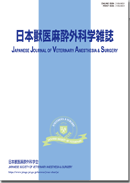Volume 46, Issue 2
Displaying 1-3 of 3 articles from this issue
- |<
- <
- 1
- >
- >|
BRIEF NOTE
-
2015Volume 46Issue 2 Pages 25-30
Published: 2015
Released on J-STAGE: November 24, 2015
Download PDF (1262K) -
2015Volume 46Issue 2 Pages 31-35
Published: 2015
Released on J-STAGE: November 24, 2015
Download PDF (1922K) -
2015Volume 46Issue 2 Pages 37-41
Published: 2015
Released on J-STAGE: November 24, 2015
Download PDF (1995K)
- |<
- <
- 1
- >
- >|
